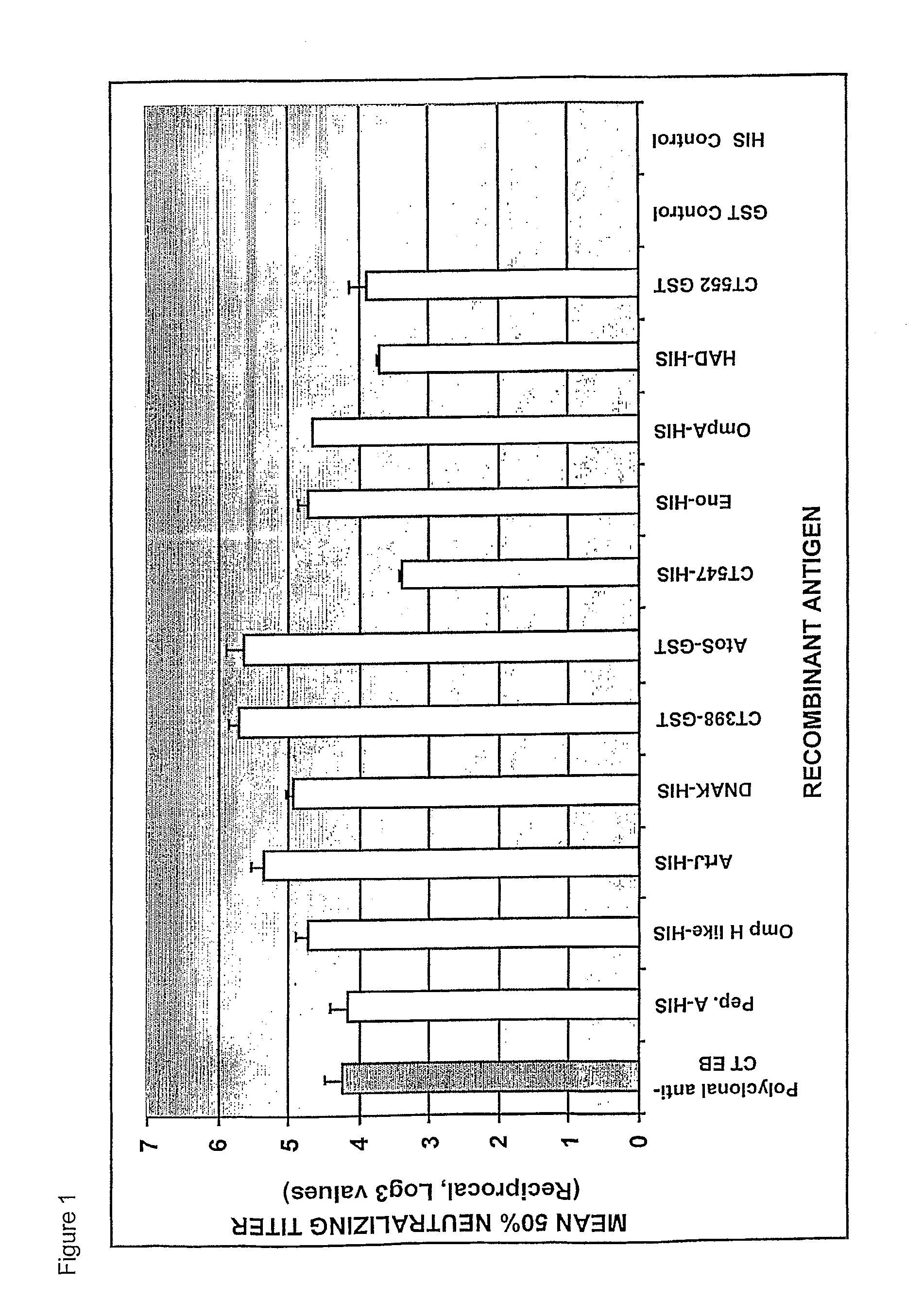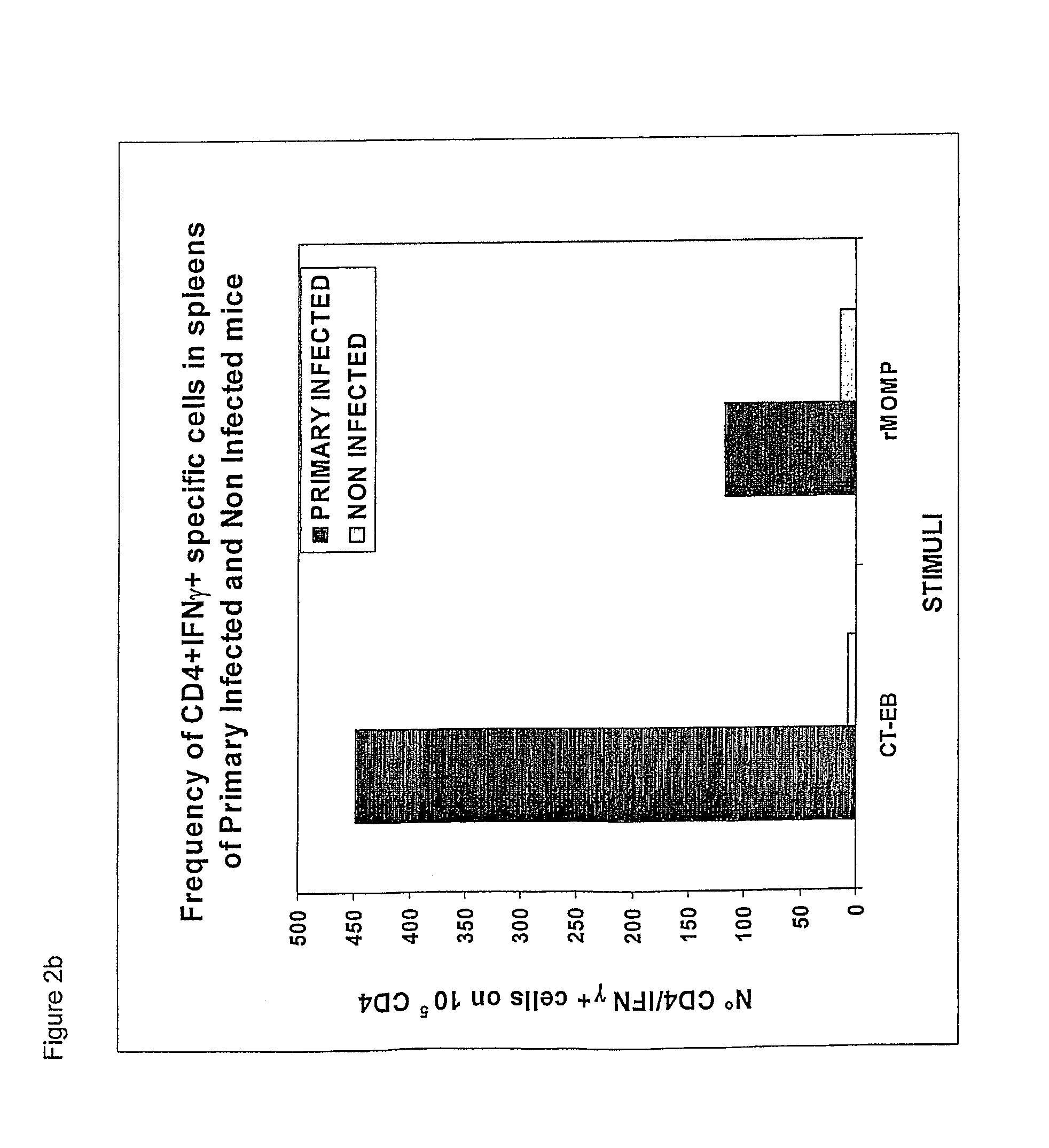Chlamydial antigens
a technology of chlamydia and antigens, applied in the field of immunology and vaccinology, can solve the problems of sterility and blindness, incomplete protection conferred by natural chlamydia /i>infection, and chronic infection with severe consequences, and achieve the effect of improving immunogenic compositions and immunogenic compositions
- Summary
- Abstract
- Description
- Claims
- Application Information
AI Technical Summary
Benefits of technology
Problems solved by technology
Method used
Image
Examples
Embodiment Construction
Identifying Surface-Exposed and / or Surface-Associated Chlamydia Antigens
[0536]Surface-exposed and / or surface-associated Chlamydia antigens can be identified using any one or combination of several proteomics approaches as outlined below. These proteomics strategies have great potential for shortening the time needed for vaccine discovery when compared with other strategies, such as reverse vaccinology. Surface-exposed and / or surface-associated Chlamydia antigens identified by these methods can be used as active agents in compositions for preventing and for treating Chlamydia infections.
[0537]One method for identifying surface-exposed and / or surface-associated Chlamydia antigens is described as follows: the surface of Chlamydia Elementary bodies (EBs) is digested in vivo under physiological conditions using reagents which cleave proteins. Typically the reagents are proteases (e.g., trypsin, protease K, papain), although any protein cleavage reagent can be used. These reagents include...
PUM
| Property | Measurement | Unit |
|---|---|---|
| mass | aaaaa | aaaaa |
| concentration | aaaaa | aaaaa |
| molar ratio | aaaaa | aaaaa |
Abstract
Description
Claims
Application Information
 Login to View More
Login to View More - R&D
- Intellectual Property
- Life Sciences
- Materials
- Tech Scout
- Unparalleled Data Quality
- Higher Quality Content
- 60% Fewer Hallucinations
Browse by: Latest US Patents, China's latest patents, Technical Efficacy Thesaurus, Application Domain, Technology Topic, Popular Technical Reports.
© 2025 PatSnap. All rights reserved.Legal|Privacy policy|Modern Slavery Act Transparency Statement|Sitemap|About US| Contact US: help@patsnap.com



